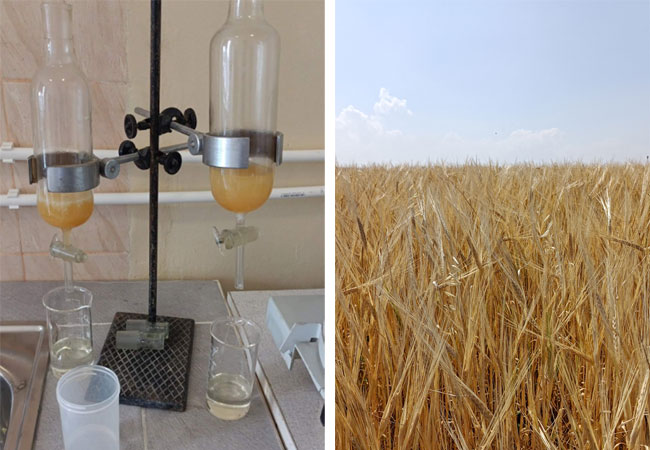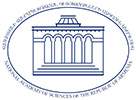The activity levels of natural (Ra-226, Th-232, K-40) and artificial (Cs-137) radionuclides in the agricultural lands in Armavir Region, Armenia, were evaluated at the Center for Ecological- Noosphere Studies of NAS RA.
The most abundant natural radionuclides in the environment are radium-226 (Ra-226), thorium-232 (Th-232) and potassium-40 (K-40). Human beings and other living organisms are constantly exposed to natural radiation mainly due to the decay of these radionuclides in the soil. Artificial radionuclides appear in the environment as a result of human activities, mainly from major accidents at nuclear power plants, such as the Fukushima NPP (2011) and Chernobyl NNP (1986) accidents, as well as the nuclear weapon tests that are currently banned. The most common of the artificial radionuclides is cesium-137 (Cs-137).
Natural and artificial radionuclides from soils can pass into crops that explain the great importance of studies aimed at the radionuclide composition of agricultural soils. Assessment of the activity of both natural (Ra-226, Th-232, K-40) and artificial (Cs-137) radionuclides in the soils of Armavir region was carried out by the Center for Ecological-Noosphere Studies of NAS RA. “As a result of the study, it has become clear that relatively high activities of natural radionuclides were recorded in the parts of the region where the soil- forming rocks are volcanic, but they do not exceed the values estimated by the UN Scientific Committee on the Effects of Atomic Radiation for Armenian soils. The activity of CS-137 in soils increases along with the absolute height, which is due to atmospheric flows with the inflow of Cs-137 into the territory of Armenia. It is also important that the activity of artificial Cs-137 in the area around the city of Metsamor, adjacent to the Armenian nuclear power plant, is low and corresponds to the activity levels recorded at similar altitudes elsewhere. In fact, the main source of cesium in Armenia is global radioactive fallouts, which were formed in the last century from the emissions of artificial radionuclides as a result of nuclear power plant accidents and nuclear weapons tests,” said Olga Belyaeva, the head of the Department of Radioecology of the Center, candidate of biological sciences.

She mentioned that the health risk will be covered in detail in the scientific publications on the research. In the future, the data obtained will be included in the RA radioecological atlas.
"This research is of practical significance, as expert distribution maps of natural and artificial radionuclide activity levels in agricultural lands will be developed, which is a mandatory part of one of the priority areas of the RA government - food security risk assessment. The importance of the research is that Armenian Nuclear Power Plant is located in the Armavir region, therefore, studying the radioactivity in the given area stems from both environmental and national security issues," said Olga Belyaeva.
The research was carried out with the participation of young researchers of the Radioecology and other departments of the Center for Ecological-Noosphere Studies of NAS RA within the framework of the State Budget. Agricultural soils sampled from the territory of Armavir region in 2019 were used within the framework of the State Target Program "Development of expert geochemical maps to ensure sustainable agriculture development and food security" (Sup.: Lilit Sahakyan, 2019-2023) funded by the Science Committee of the RA Ministry of Education, Science, Culture and Sports.














![academy [@] sci.am academy [@] sci.am](images/email.jpg)




















